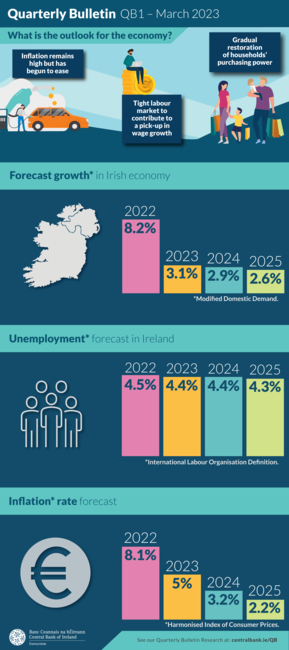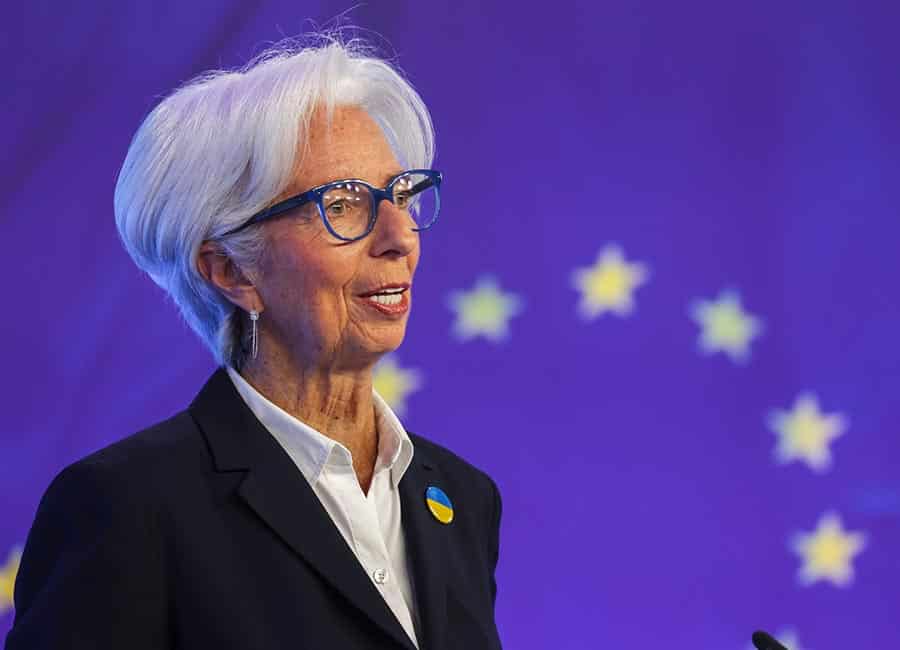The Central Bank has forecast inflation of 5% for the full year in its latest quarterly bulletin, down from 6.3% in its previous forecast.
The financial regulator expects annual inflation to fall this year from the full-year 2022 average of 8.1%, and it has predicted that inflation will continue to decline in the coming years, to 3.2% in 2024 and 2.2% in 2025.
Excluding energy prices, the Central Bank expects inflation of 4.3% this year, 2.9% in 2024, and 2.6% in 2025.
The Central Bank said the outlook for the domestic economy had improved since the last bulletin as inflationary pressures are now expected to be less severe.
However, the forecasts for headline inflation fell solely due to the stabilising energy price outlook, with core inflation in consumer prices likely to be more persistent while still easing due reduced transport fares and third-level education fees.
"Given the market expectations for wholesale energy prices, and the likely lagged pass-through to consumer prices, headline inflation is expected to be lower than expected previously and continue on a downward trajectory over the forecast horizon," said Robert Kelly, director of economics and statistics at the Central Bank.
"However, there remains a significant amount of uncertainty around the precise path for inflation, and the extent to which underlying inflation measures such as core inflation will remain elevated."
It states in its Q1 quarterly bulletin that modified domestic demand, the accepted measure of the domestic economy excluding the output of multinationals, will grow 3.1% in 2023 before declining to 2.9% in 2024 and 2.6% in 2025.
The Central Bank previously forecast modified domestic growth of 2.3% for this year and 3.3% in 2024.

Gross domestic product growth, which includes the output of multinationals, will moderate to 5.6% this year from 12% in 2022, falling to 4.8% in 2024 and rising again to 5.6% in 2025, according to the forecast.
Unemployment, meanwhile, is likely to average 4.4% this year and next and tick down to 4.3% in 2025 as the country maintains full employment for the foreseeable future.
The forecasts for 2023 and 2024 were adjusted significantly down (-0.7% and -0.4%) from the Q4 bulletin.
The Central Bank suggested that capacity constraints are more binding due to the historic lows in unemployment and persistent tightness in the labour market.
Uncertainty remains high, but risks to the domestic growth outlook are now less tilted to the downside than previously forecast, it added in summary.
The global economic backdrop has performed better than previously expected, and the Irish economy is showing continuing resilience," Kelly said.
"As the year progresses, amidst a tight labour market, household real incomes are expected to recover gradually, supporting underlying growth in the domestic economy. The headline inflationary pressures are easing, however inflation is expected to remain elevated in 2023 and 2024, albeit at lower rates than previously forecast.”
The bulletin found that exports increased 15% in volume terms last year due to the activities of multinationals in the IT an pharmaceutical sectors, and exports are expected to grow 8.2% in 2023, 6.2% in 2024, and 7.9% in 2025.
(Pic: Leah Farrell/Rollingnews.ie)











